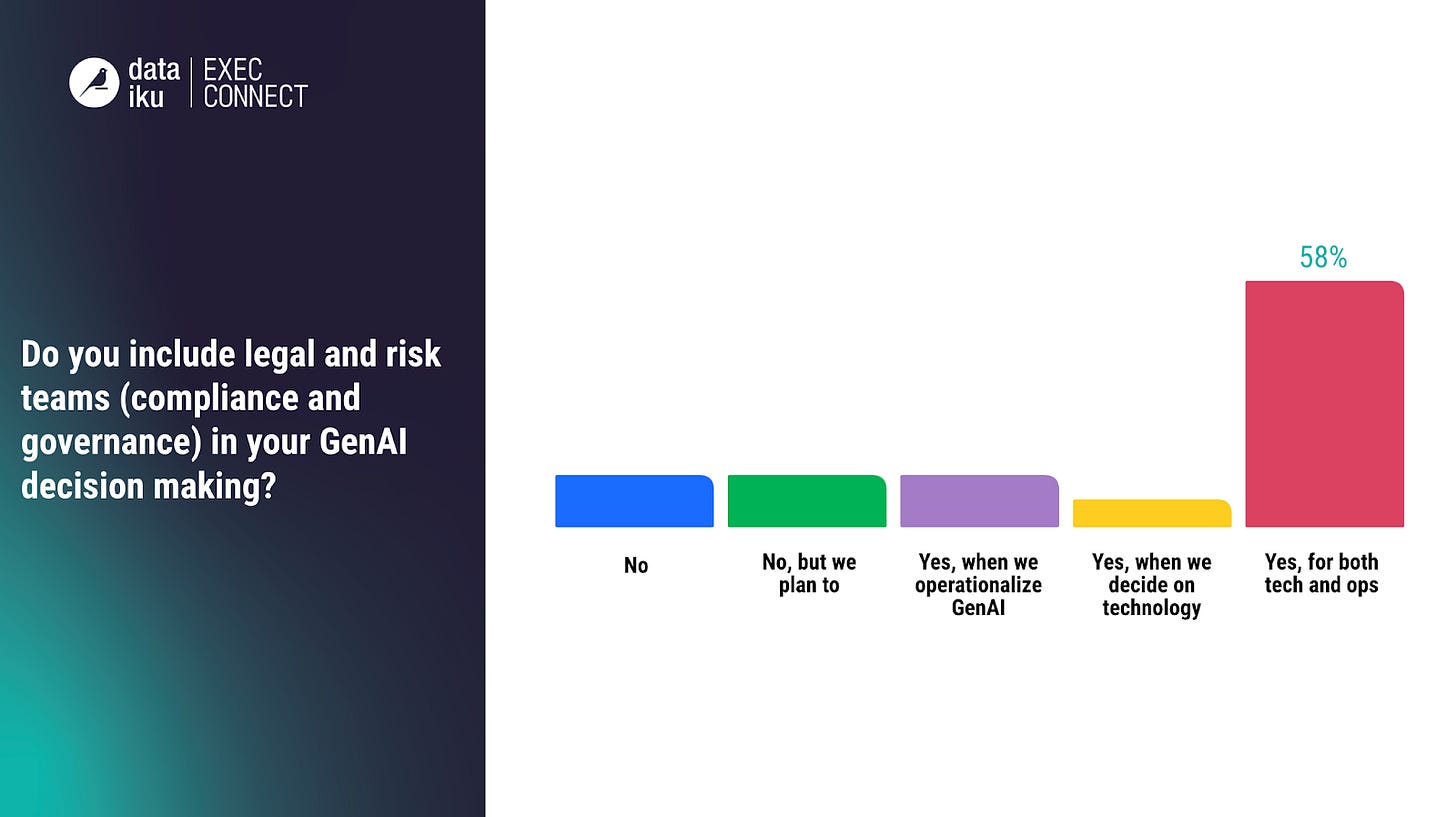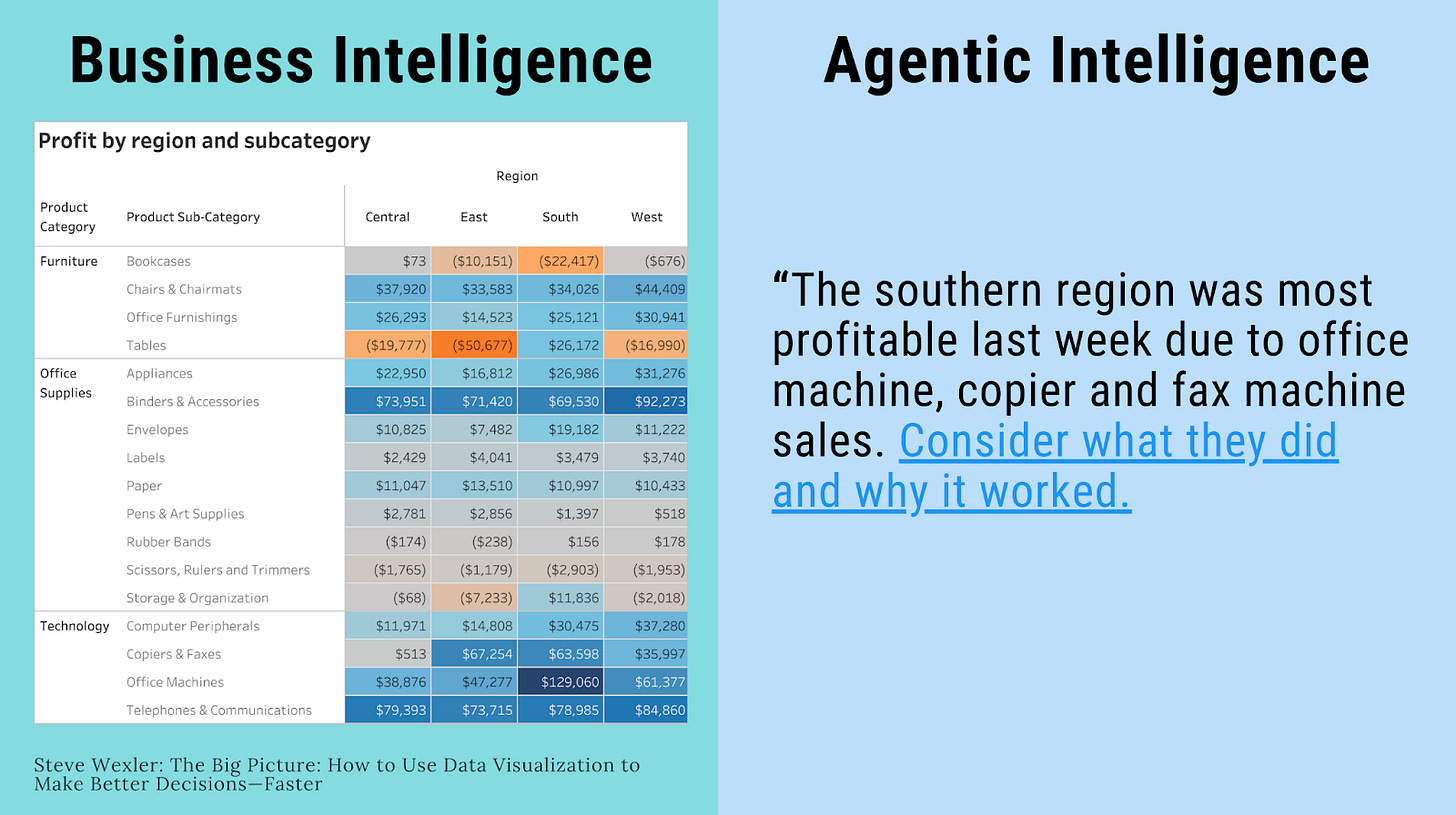7 Secrets of AI Success From High-Performing Innovators
Research from the C-suite reveals surprising insights into how high-performing companies shift their attitude and culture to get the most from AI.
AI has gone from curiosity to a must-do agenda for every business in a few short years. While some firms are at the early experimentation stage with AI, research shows that six percent of companies can ascribe 10% to 20% of earnings and profits to AI.
We can learn a lot from this six percent. Here are seven secrets of how top-performing leaders help their firms get the most from AI.
1. Embrace Data Humanists
“The way we think of software has to fundamentally change to empower every person on the planet to get the most from AI,” Satya Nadella told Sam Altman. Top-performing companies know this and enable everyone with AI, not only those with a science, math, and computer science background. It’s AI for all.
In “A Poet’s Perspective: Seven Reasons You Should Include an Analyst From the Humanities,” Erin Waldron argues that “data humanists” are the key to this transformation. These employees are deeply rooted in the humanities and grounded in AI.
Erin argues that humanities education instills thinking that’s essential to AI success:
Humanists are trained to be creative.
Humanists have a passion for curation.
Humanists have excellent communication skills.
Humanists challenge what we think we already know.
Humanists thrive on ambiguity.
Humanists remember we’re studying predictably unreliable humans.
Humanists are humble about what they don’t know.
So, secret #1 is to pursue AI for all, not just data scientists.
2. Use AI Like a Camera
When still photography was introduced in the 19th century, the art establishment greeted it with disdain. In 1913, art critic Marius De Zayas wrote, “Photography is not art. Art is the expression of the conception of an idea. Photography is the plastic verification of a fact.”
But just as a camera captures what it’s aimed at, using AI is an artistic endeavor. AI can summarize documents, suggest better email phrasing, and make statistical predictions, but it can only be helpful if humans apply creativity, experience, and instinct.
I wrote about this idea in “The Joy of Generative AI Cocreation” on this blog, and the article stands the test of time. It’s one of my most popular recent articles. In case you missed it, here it is!
The Joy of Generative AI Cocreation
Years ago, a photography teacher gave me a project: take 100 pictures of the same object. It was an exercise in seeing. I chose a flowering bush in my backyard. The first ten shots were easy: I zoomed in, zoomed out, and tried a bunch of angles. Then, I was stuck.
So, view AI as a camera — a tool for expressing your business artistry.
3. Bring Lots of Love for Lawyers
Leaders at top-performing AI companies love their lawyers more than laggards. A Dataiku Everyday AI event survey found that fifty-eight percent of high-performing executives said they involve lawyers early in making decisions about AI. Their reasoning: AI opportunity abounds, but so do risk, ethical concerns, bias, and fairness considerations.
But lawyers aren’t just about risk avoidance; the best lawyers aim to accelerate the business. One IT executive said her legal team trained a large language model (LLM) to help her triage legal documents independently, translating legal ease into plain-language interpretations and giving her insight into proposed terms before involving legal. This proactive use of AI streamlines the business.
So, don’t delay: Even if you’re a high-performing AI company already, take your lawyer to lunch, brainstorm new ways to use AI, and include them as early adopters, not just a risk manager.
4. Apply Ant Theory to Leverage Agents
AI agents show promise in acting independently to produce human-like responses for call center management, anomaly, and security breach detection. According to research, synthetic users achieve 85% accuracy in simulating interviewee responses for surveys, product research, and behavioral studies. Using agentic AI can dramatically reduce the cost of performing research, enabling teams to interview thousands of users at a fraction of the cost.
However, while some AI agents can act autonomously for simple tasks, leaders are learning to exert organizational control over agents. They must imagine what it means to interview 1,000 synthetic users instead of 50 real ones. Like painting a masterpiece made of tiny agentic ants, they must exert high-level thinking and analysis on insights derived from agents.
Secret #4 is that leaders engage early with agentic computing but are experimenting with carefully balancing their power with oversight inspired by the organizational constructs inspired by ant and bee colonies.
5. Use AI Like an Insight Snowball
Leaders use AI as an ever-growing data analysis asset, like a snowball rolling downhill, absorbing what it encounters, growing bigger and more powerful. At Dataiku’s Exec Connect sessions, some report over 90% of their employees use GenAI every week. AI leaders harvest that insight and learning.
For example, one executive deployed GenAI to help teams interpret regulations. As his analysts monitored use, they noticed employees ask questions about product pricing, competitive intelligence, and organizational structure. He established a monthly “Rank, Rate, Add” meeting to rank questions, rate their importance, and add data to their LLM where possible. Like a snowball rolling downhill, they pick up new questions each month and grow their LLM Q&A corpus.
So, the fifth secret of high-performing AI leaders is to grow it like a snowball rolling downhill, picking up insights on its path.
6. Employ AI as a New Form of BI
AI leaders leverage BI analysts to help develop generative and agentic analytics.
At Dataiku’s Exec Connect Roadtrip event in Boston, an EVP of analytics at a top-tier bank said she redirected 25% of her BI team to train agents. She explained that BI analysts understand users' questions and are best placed to incorporate them into LLMs and agents. Agentic intelligence helps spot insights that normally require reactive BI.
To explain how, she used a classic exercise from BI guru Steve Wexler’s book, “The Big Picture.” Steve’s exercise presents a raw table of numbers to illustrate how ineffective design leads to confusing, inaccurate interpretations. By prioritizing key questions and adding color highlights to show top and poor performers (best performers in blue, poor performers in orange, below left), the time to answer questions of this data is reduced from minutes to seconds with 100% accuracy instead of 80%.
She then shows how the same questions can be answered autonomously, by an agent, once the analyst trained it on the key questions to answer. By injecting agents with these questions, her analysts speed up the time to insight and democratize access to insights with a push-based model: When the agent finds a significant change in the answer to a question, it’s sent to interested parties.
Secret #6 is that leaders are starting to turn their view of BI on its head with AI. Analysts are the key to training agents on which insights matter. Like good dashboard design, good agent design helps deliver insights faster and better.
7. Remember the HCI, not Just the AI
When Steve Jobs launched the iPhone in 2007, he spent 42% of his time (almost four minutes out of nine) on what he felt was its most crucial breakthrough: Using your finger for Human-Computer Interaction, or HCI. It was the new style of interaction that he was most excited about, not the screen, circuits, and software inside the device.
If Jobs launched GenAI as a new Apple product today, he would probably spend 42% of his time on prompting — the ability to understand human questions, reason, and generate answers with immense depth, power, and accuracy. High-performing AI leaders view the HCI model as the most powerful innovation of AI.
Prompting changes the human-to-AI interface in a way that radically changes how analytical jobs are done. Any task using BI dashboards, spreadsheets, or applications is a candidate for prompt-based interfaces. For example, check out Dataiku’s latest innovation that helps you talk to your data, called Dataiku Answers. It makes it easier to break down the barrier between human questions and data-driven answers.
Secret seven is to look for ways to change the relationship between business questions and their answers using prompt-based interfaces and to use tools that break down human-to-computer barriers to power Everyday AI.
Success With AI Is Where Human Creativity Meets Silicon Smarts
These seven secrets of AI leadership remind us that lowering the barrier between human creativity and leadership are the essential drivers of AI's potential, not only technological prowess. By empowering all employees with the right tools, using AI for business creativity, and flipping your view of HCI on its head, organizations can begin to harness the full transformative power of AI.
The original version of this article appeared on the Dataiku blog. I’ve been hosting discussions about their executive programs with C-Suite leaders and their use of AI. Those discussions and surveys informed this article.
Like this? Read my favorite Substacks here:
by Michael Spencer ~ of ~ ~ by ~ by ~ by ~ by ~ by ~ and follow Mike O’Toole from PJA.











"Success With AI Is Where Human Creativity Meets Silicon Smarts"
this goes right in my journal and perhaps, I may use it in my work.
The point #7 is absolutely important and well connected with the well-known iPhone launch story. As always very insightful read from you, Mark.